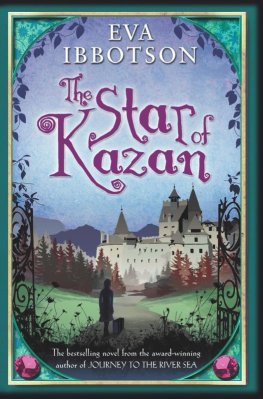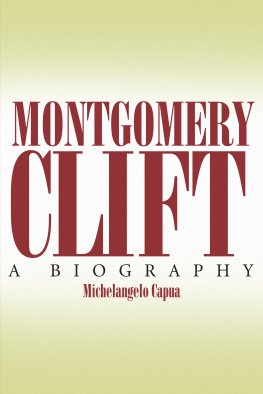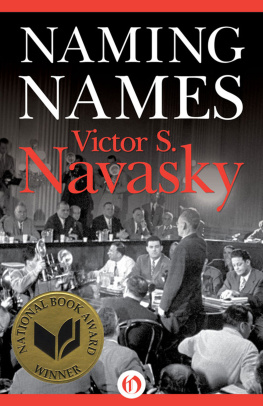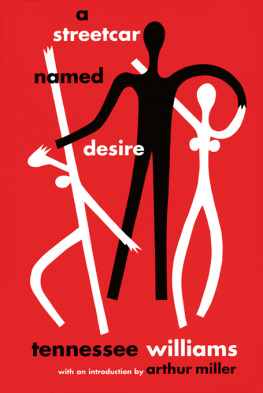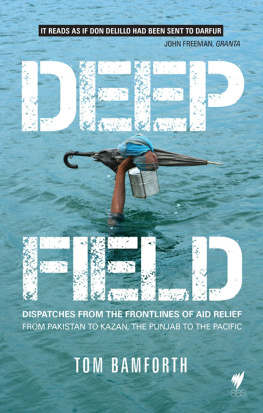Kazan
REVISITED

Kazan
REVISITED
Edited by
LISA DOMBROWSKI
WESLEYAN UNIVERSITY PRESS
MIDDLETOWN, CONNECTICUT
Wesleyan University Press
Middletown CT 06459
www.wesleyan.edu/wespress
2011 Wesleyan University Press
All rights reserved
Manufactured in the United States of America
Wesleyan University Press is a member of the Green Press Initiative. The paper used in this book meets their minimum requirement for recycled paper.
An earlier version of Jonathan Rosenbaums Elia Kazan, Seen from 1973 appeared in Cinema: A Critical Dictionary: The Major Filmmakers Volume One, ed. Richard Roud (New York: Viking Press, 1980) and is hereby reprinted with the permission of the author.
Photo on courtesy of the
Wesleyan Cinema Archives.
Library of Congress Cataloging-in-Publication Data
Kaza revisited / edited by Lisa Dombrowski.
p. cm.
ISBN 978-0-8195-7084-0 (cloth: alk. paper)
I. Kazan, EliaCriticism and interpretation.
I. Dombrowski, Lisa.
PN1998.3.K39K39 2011
79I.430233092dc22 2010033336
5 4 3 2 1
CONTENTS
ACKNOWLEDGMENTS
This book originated as part of Wesleyan Universitys celebration of Elia Kazans centennial, including a partial film retrospective and an exhibition of materials from the Kazan Collection held at the Wesleyan Cinema Archives. The Kazan Collection includes correspondence, scripts, notebooks, production documents, photographs, clippings, awards, writings, and other materials associated with Kazans life and career. Jeanine Basinger, the Curator of the Archives, and I would like to thank Michael Roth, Wesleyans president, for his support of the centennial.
Kazan Revisited has benefited from the contributions of many here at Wesleyan. Jeanine provided the inspiration for the book, and as ever has my gratitude, love, and admiration. Joan Miller, our film archivist, assisted almost half of the writers with archival research, steered me through the photo selection, and generally served as a font of Kazan information. I greatly appreciate her patience, dedication, and encyclopedic memory. Marc Longenecker, Thaddeus Ruzicka, and Sal Privitera provided key help with film prints and frame enlargements, while Marc and Thad joined me and Steve Collins, Scott Higgins, David Laub, Katja Straub, and Jacob Bricca in discussions about Kazans work. I am fortunate to have such creative colleagues with whom to analyze movies, laugh, and share good food. Finally, my ever-abundant hurrahs go to Lea Carlson and Joyce Heidorn, the pillars of the department, without whom Film Studiesand Icould not stand.
The editors and staff at Wesleyan University Press generously provided a home for this project and patient guidance during its production. I much appreciate the editorial and marketing suggestions of Suzanna Tamminen, Parker Smathers, Leslie Starr, and Stephanie Elliott, from whom I continue to learn about publishing.
Last in my list but always first in my heart is my familyHelen, Carol, Chuck, Eleanor, and Michaeland my partner in dance and life, Brett. The next one checking page proofs will be you!
LISA DOMBROWSKI
Introduction
What do we talk about when we talk about Elia Kazan?
We talk about his work. As an actor, director, and writer, Kazans groundbreaking contributions to American art and culture span over five decades and continue to permeate our popular consciousness. His participation in the activism of the Group Theatre, promulgation of the Method via the Actors Studio, and acclaimed direction of Broadway milestones such as The Skin of Our Teeth, A Streetcar Named Desire, Death of a Salesman, and Cat on a Hot Tin Roof situate him as the most influential director of midcentury American theater. With films such as the adaptation of A Streetcar Named Desire (1951), On the Waterfront (1954), East of Eden (1955), and Splendor in the Grass (1961), Kazan made an equally indelible mark on cinema. Between 1948 and 1964 he was nominated for a Best Director Academy Award five times and won twice. His name is repeatedly linked with those of his many collaborators, including the eras defining writers (Tennessee Williams, Arthur Miller, John Steinbeck, Budd Schulberg) and stars (Marlon Brando, James Dean, Montgomery Clift, Warren Beatty).
Kazans films engage seriously with the social problems and conflicts of their day, but their timeless appeals to feelings of alienation, longing, and rebellion return them to us again and againso frequently, in fact, that their oft-quoted scenes have become ripe for parody. While my undergraduate studentsall born over a decade after Kazans last film was madestill root for Deans misjudged, mopey Cal in East of Eden, they are also quick to laugh when they catch Peter Boyle and John Belushi trading lines from On the Waterfront as Dueling Brandos on an old Saturday Night Live rerun, or when Homer Simpson embodies the boorishness of Stanley Kowalski in the much-loved 1992 The Simpsons episode A Streetcar Named Marge. They may never have seen A Streetcar Named Desire, but at the drop of a dime they will all yell Stellllaaaaaaa!
We also talk about Kazans lifein particular, his appearance before the House Un-American Activities Committee (HUAC) in 1952. Kazan was a member of the Communist Party for about eighteen months in the early 1930s while working with the Group Theatre, but he came to view Communism with suspicion and disgust after the Party began dictating artistic terms to its Group members and subjected him to a show trial. When Kazan was called to testify before HUAC during its investigation into the alleged Communist infiltration of Hollywood, he initially balked at providing the names of former associates who were Party members but then changed his mind. Although Kazan remained a committed liberal, his testimony and the subsequent advertisement he published in the New York Times defending his decision to name names marked him as a traitor in the eyes of many on the Left, guilty of complicity and betrayal, careerism and pride.
Decades later, Kazan reflected on his decision to testify in interviews and his startlingly frank 1988 autobiography Elia Kazan: A Life, revealing his evolving and frequently mixed feelings about HUAC. A Life did little to satisfy Kazans criticsas evidenced by the controversy surrounding his receipt of an honorary Lifetime Achievement Academy Award in 1999while also exposing him to additional charges of disloyaltyof a marital sort this time. From adulterous escapades in alleyways, described pages into the first chapter, through the tale of bedding Marilyn Monroe on the night after she decided to marry Joe DiMaggio, A Life opened all aspects of Kazans private life to scrutiny. The man was an obsessive observer, analyzer, and recorder of human behaviorespecially his own. Was his autobiography an attempt to honestly and bravely account for his thoughts and actionshowever flawed they sometimes wereor to preempt and thus deflect the criticism of others, so as to appear above it all?
All too often, what we talk about when we talk about Kazan comes down simply to the question one film scholar asked me: Are you for or against?
Weve been talking about Kazan for over half a century now. Is there anything left to say?
Plenty.
In the wake of the opening of Kazans personal archive to researchers, the centenary of his birth, the accompanying film retrospectives, and recent books, now is the time to revisit Kazan, and in particular his cinematic legacy. The topics of conversation thus far have been meaty, and they deserve to be chewed over: his status as author, collaborator, and artist; his accomplished work with actors; his psychological approach to realism; his interest in social problems and family dynamics; and the stain of HUAC on our national, and in Kazans case personal, character. This book engages these subjects in new ways and expands the conversation, providing a survey of what a select group of film critics and scholarssome with prior publications on Kazan, others writing on him for the first timefind significant about his life and movies today. The authors chose their own themes and adopted a range of approaches, examining Kazans importance to American cinema from historical, industrial, aesthetic, and social perspectives. Not all of the authors are for Kazanand they dont always agree.
Next page

